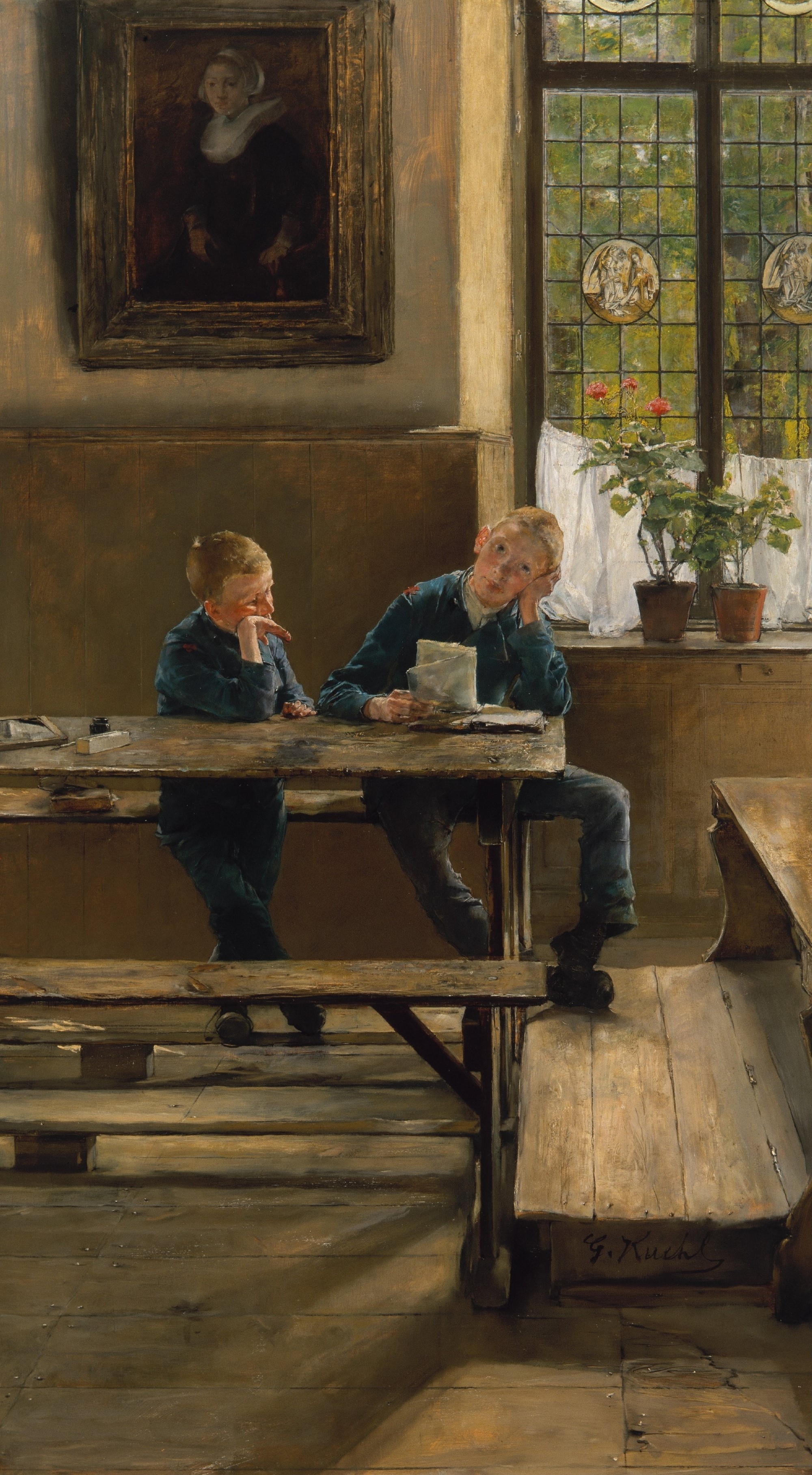Like Max Liebermann and Max Slevogt, Gotthard Kuehl was among the first German artists to take up themes of everyday urban life by using Impressionist painterly effects. During his time in Lübeck and in Dresden, where he accepted a professorship at the Academy in 1895, he cast his attention to life in orphanages. Their blue school uniforms with the red crosses make it possible to identify the two boys in the Bremen picture as belonging to the Lübeck orphanage. Although sunlight floods the room, Kuehl’s work conveys a restrained atmosphere. Both children rest their heads pensively on their hands—in keeping with the traditional gesture of melancholy. Perhaps they are thinking about the contents of the letter. It may be that Kuehl has captured them at a moment when they are particularly aware of their fates as orphans. The images in the glass window provide comfort and hope: They show the Annunciation, when Mary, approached by the Angel Gabriel, places her life in God’s hands as the “handmaid of the Lord” (Luke 1:38).
en

